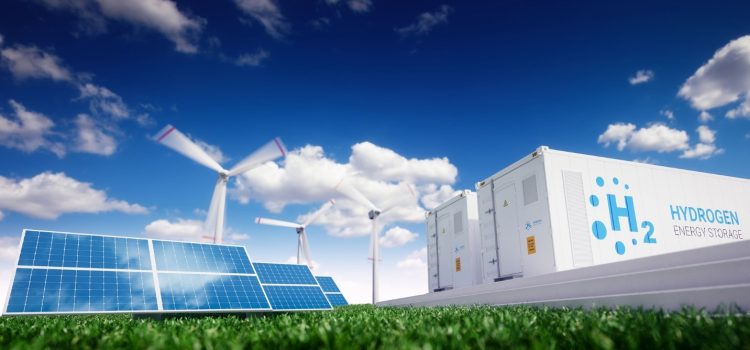
New Developments in Renewable Energy Storage Solutions
The global shift towards renewable energy is gaining momentum, driven by the urgent need to mitigate climate change and reduce dependency on fossil fuels. However, one of the critical challenges in the widespread adoption of renewable energy sources such as solar and wind is their intermittent nature. This has spurred significant advancements in renewable energy storage solutions, which are essential for ensuring a reliable and stable energy supply. This article delves into the latest developments in renewable energy storage technologies, highlighting key innovations and their potential impact on the energy landscape.
Advanced Battery Technologies
Lithium-Ion Batteries
Lithium-ion batteries have long been the frontrunner in energy storage solutions due to their high energy density, efficiency, and declining costs. Recent advancements have focused on enhancing their performance and safety. Innovations such as solid-state electrolytes are being developed to replace the flammable liquid electrolytes currently used in lithium-ion batteries. Solid-state batteries promise higher energy densities, longer lifespans, and improved safety profiles.
Sodium-Ion Batteries
Sodium-ion batteries are emerging as a promising alternative to lithium-ion batteries, particularly for large-scale energy storage applications. Sodium is more abundant and less expensive than lithium, making sodium-ion batteries a cost-effective solution. Recent research has achieved significant improvements in the energy density and cycle life of sodium-ion batteries, bringing them closer to commercial viability.
Flow Batteries
Flow batteries, such as vanadium redox flow batteries, offer a unique advantage in terms of scalability and longevity. These batteries store energy in liquid electrolytes contained in external tanks, allowing for easy scaling by simply increasing the tank size. Recent developments have focused on improving the energy density and reducing the costs of flow batteries, making them more competitive for grid-scale energy storage.
Hydrogen Storage
Hydrogen is gaining traction as a versatile energy carrier that can store excess renewable energy and provide power when needed. Electrolysis, which uses electricity to split water into hydrogen and oxygen, is a key technology for producing green hydrogen from renewable sources. Recent advancements in electrolyzer technology have significantly improved efficiency and reduced costs, making hydrogen a more viable option for energy storage.
Moreover, new methods for hydrogen storage, such as metal hydrides and liquid organic hydrogen carriers (LOHCs), are being developed to address the challenges of hydrogen’s low energy density and storage complexity. These innovations are paving the way for hydrogen to play a crucial role in the future energy landscape.

Thermal Energy Storage
Thermal energy storage (TES) systems store excess heat generated from renewable sources, such as concentrated solar power (CSP) plants, for later use. Recent developments in TES technologies have focused on improving the efficiency and cost-effectiveness of these systems.
Molten Salt Storage
Molten salt storage is a well-established TES technology used in CSP plants. Recent innovations have enhanced the thermal stability and heat transfer properties of molten salts, allowing for higher operating temperatures and improved efficiency. Additionally, research is ongoing to develop new molten salt formulations that are less corrosive and more cost-effective.
Phase Change Materials
Phase change materials (PCMs) are another promising TES solution. PCMs store and release thermal energy during phase transitions, such as melting and solidifying. Recent advancements have focused on developing PCMs with higher energy densities and faster response times. These improvements make PCMs more suitable for a wide range of applications, from residential heating and cooling to industrial processes.
Mechanical Energy Storage
Mechanical energy storage technologies, such as pumped hydro storage and flywheels, offer robust and long-lasting solutions for storing large amounts of energy.
Pumped Hydro Storage
Pumped hydro storage is the most widely used form of energy storage globally. It involves pumping water to a higher elevation during periods of excess energy and releasing it to generate electricity when needed. Recent innovations have focused on improving the efficiency and environmental impact of pumped hydro systems. For example, closed-loop systems that minimize water usage and environmental disruption are being developed.
Flywheel Energy Storage
Flywheel energy storage systems store energy in the form of rotational kinetic energy. Recent advancements in flywheel technology have improved their energy density, efficiency, and durability. High-speed flywheels made from advanced composite materials can now achieve higher rotational speeds and longer lifespans, making them more competitive for grid-scale applications.
Emerging Technologies
Supercapacitors
Supercapacitors, also known as ultracapacitors, offer rapid charging and discharging capabilities, making them ideal for applications requiring short bursts of high power. Recent developments have focused on increasing the energy density of supercapacitors while maintaining their high power density and long cycle life. Innovations in electrode materials, such as graphene and carbon nanotubes, are driving these improvements.
Solid-State Batteries
Solid-state batteries represent a significant leap forward in energy storage technology. By replacing the liquid electrolyte with a solid electrolyte, these batteries offer higher energy densities, improved safety, and longer lifespans. Recent research has made strides in overcoming the challenges associated with solid-state batteries, such as interface stability and manufacturing scalability, bringing them closer to commercial deployment.
Conclusion
The rapid advancements in renewable energy storage solutions are addressing the critical challenge of intermittency associated with renewable energy sources. From advanced battery technologies and hydrogen storage to thermal and mechanical energy storage, these innovations are paving the way for a more reliable and sustainable energy future.
As the world continues to transition towards cleaner energy, the development and deployment of efficient and cost-effective energy storage solutions will play a pivotal role in ensuring a stable and resilient energy system. Continued investment in research and development, along with supportive policies and collaboration across industries, will be essential to unlocking the full potential of these emerging technologies and achieving a sustainable energy future for all.








